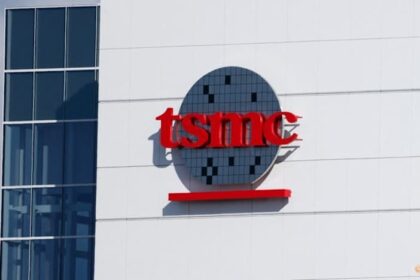South Korean Scientists Unveil High-Resolution Genetic Tool for Lupus
In a landmark achievement for autoimmune disease research, a team of South Korean scientists has developed a cutting-edge genetic analysis tool capable of decoding the most complex regions of the human genome linked to lupus. This breakthrough not only deepens scientific understanding of how lupus develops but also paves the way for personalized treatments tailored to individual genetic profiles. The research, led by Professor Bae Sang-cheol of Hanyang University Hospital for Rheumatic Diseases, in collaboration with Professor Kim Kwangwoo at Kyung Hee University and the National Institute of Health’s genome research department, marks a significant step forward in the global fight against autoimmune diseases.
- South Korean Scientists Unveil High-Resolution Genetic Tool for Lupus
- Decoding the Major Histocompatibility Complex: The Heart of Autoimmune Genetics
- Why Lupus Is So Difficult to Crack: The Genetic Puzzle
- Precision Medicine: Toward Personalized Lupus Treatments
- Global and Regional Impact: Closing the Gap in Asian Genomic Research
- The Broader Context: Lupus, Autoimmunity, and Public Health
- Infrastructure and Collaboration: Building a Foundation for Future Research
- Challenges and Next Steps: The Road Ahead for Lupus Research
- In Summary
Lupus, formally known as systemic lupus erythematosus (SLE), is a chronic autoimmune disorder in which the immune system mistakenly attacks healthy tissues and organs. The disease can affect the skin, joints, kidneys, brain, and other organs, leading to a wide range of symptoms and complications. Despite decades of research, the precise genetic and environmental factors that trigger lupus have remained elusive, largely due to the extraordinary complexity of the immune-related gene clusters involved.
Decoding the Major Histocompatibility Complex: The Heart of Autoimmune Genetics
The South Korean team’s innovation centers on the Major Histocompatibility Complex (MHC) region, a densely packed segment of DNA on chromosome 6 that plays a pivotal role in regulating the immune system. The MHC region contains hundreds of genes, including the Human Leukocyte Antigen (HLA) family and the Complement Component 4 (C4) gene, both of which have long been suspected of contributing to autoimmune diseases like lupus, rheumatoid arthritis, and inflammatory bowel disease.
Professor Bae Sang-cheol explains the challenge:
“The immune-related genes located in the MHC region on chromosome 6 are extremely complex, making them difficult to analyze. With this new tool, we can now accurately and easily analyze this region. This creates a foundational infrastructure that could be used to uncover genetic causes of not only lupus, but also other autoimmune diseases.”
Until now, most genetic reference panels used for research were built using data from populations in the United States and Europe. This limited their accuracy for East Asian populations, as key genetic variations specific to Koreans and other Asians were not represented. The new tool, known as an MHC imputation reference panel, is the first of its kind to incorporate large-scale genomic data from nearly 70,000 Koreans, including both lupus patients and healthy controls. This ensures far greater precision in identifying genetic risk factors for lupus in East Asian populations.
Using this tool, the researchers discovered that specific amino acid changes in the HLA gene and variations in the number of C4 genes each independently influence the risk of developing lupus. For example, certain changes in the HLA gene can alter how the immune system recognizes antigens, leading to the misidentification of the body’s own tissues as foreign invaders. Similarly, a lower number of C4 genes can reduce the production of complement proteins, making the immune system more prone to imbalance and autoimmunity.
Why Lupus Is So Difficult to Crack: The Genetic Puzzle
Lupus is not caused by a single genetic mutation. Instead, it arises from a complex interplay of more than 200 genetic factors, each contributing a small amount to overall risk, and is further influenced by environmental triggers such as infections, hormonal changes, and even lifestyle factors. This complexity has made it extremely challenging for scientists to pinpoint the exact causes of lupus or to develop targeted therapies.
Recent advances in genome-wide association studies (GWAS) and transcriptome-wide association studies (TWAS) have identified over 100 risk loci for lupus, but the specific genes and mechanisms involved have often remained unclear. The new Korean reference panel allows researchers to analyze the MHC region at an unprecedented level of detail, helping to clarify which genetic variants are truly driving disease risk.
Importantly, the research also highlights the ethnic specificity of lupus genetics. Studies have shown that while some genetic risk factors are shared between Caucasian and Asian populations, others are unique to East Asians. For example, genes such as STAT4 and BLK are common risk factors across ethnicities, while ETS1, IKZF1, and SLC15A4 appear to be more specific to Asians. This underscores the importance of developing population-specific genetic tools for accurate diagnosis and treatment.
Precision Medicine: Toward Personalized Lupus Treatments
One of the most exciting implications of the new genetic tool is its potential to usher in an era of precision medicine for lupus and other autoimmune diseases. Unlike genetic disorders caused by a single mutation, lupus involves a mosaic of genetic and environmental factors. By understanding the unique genetic profile of each patient, doctors can move toward more personalized treatment strategies.
Professor Bae elaborates:
“By understanding these complex combinations, we can move toward personalized treatment. For example, if we identify that a patient’s disease is linked to the C4 gene—one of the strongest known genetic risk factors—we can choose a drug that specifically targets that mechanism. This opens the door not just to more effective therapies but also to developing new drugs.”
This approach could revolutionize the management of lupus, allowing for earlier diagnosis, more accurate risk assessment, and the selection of therapies that are most likely to be effective for each individual. It also holds promise for other autoimmune and inflammatory diseases, as the MHC region is implicated in a wide range of conditions.
Global and Regional Impact: Closing the Gap in Asian Genomic Research
The significance of the Korean team’s work extends far beyond national borders. Historically, most biomedical research has focused on populations of European descent, leaving a critical gap in knowledge about genetic risk factors in Asians. This has led to disparities in diagnosis, treatment, and health outcomes for millions of people across Asia.
Recent initiatives, such as the Asian Immune Diversity Atlas (AIDA), have begun to address this gap by mapping immune cell diversity across Asian populations. The Korean MHC reference panel complements these efforts by providing a detailed genetic map that can be used by researchers worldwide. The panel is being made publicly available through Korea’s national CODA system, a genomic infrastructure that allows open access for studies on lupus, other autoimmune disorders, infectious diseases, and chronic inflammatory illnesses.
Shyam Prabhakar, associate director at the Genome Institute of Singapore, emphasizes the importance of population-specific research:
“Human biological diversity—influenced by factors such as age, sex and genetic ancestry—significantly impacts health outcomes, making population-specific reference atlases essential for accurate clinical insights.”
By enabling large-scale, high-resolution analysis of the MHC region in East Asians, the Korean tool is expected to accelerate precision medicine research, disease prediction, and biomarker discovery across the region.
The Broader Context: Lupus, Autoimmunity, and Public Health
Lupus affects an estimated 3.4 million people worldwide, with 400,000 new cases diagnosed each year. The disease is most common among women between puberty and menopause, and its incidence is rising globally. In addition to genetic predisposition, environmental factors such as infections (including COVID-19), ultraviolet light exposure, and hormonal influences play a role in triggering disease onset.
Recent studies from South Korea and Japan have shown that COVID-19 infection increases the risk of developing autoimmune diseases, including lupus, in the year following infection. Vaccination against COVID-19 has been found to reduce this risk, highlighting the importance of public health measures in managing autoimmune disease burden. However, some research has also indicated a modestly increased risk of lupus following mRNA-based COVID-19 vaccination, underscoring the need for ongoing monitoring and research.
Autoimmune diseases like lupus are characterized by a breakdown in the body’s ability to distinguish self from non-self, leading to chronic inflammation and tissue damage. The pathogenesis involves both the innate and adaptive immune systems, with overproduction of autoantibodies and dysregulation of cytokine signaling. The complement system, particularly the C4 gene, plays a central role in maintaining immune balance, and its dysfunction is a key feature of lupus.
Infrastructure and Collaboration: Building a Foundation for Future Research
The success of the Korean research team is rooted in the country’s robust biomedical infrastructure, including large-scale biobanks, integrated health databases, and collaborative networks. Initiatives like the KOrea Renal biobank NEtwoRk System TOward Next-generation analysis (KORNERSTONE) and the Korean Variant Archive (KOVA) provide valuable resources for genetic studies and support the development of new diagnostic and therapeutic approaches.
By making their MHC reference panel publicly available, the Korean researchers are fostering international collaboration and enabling scientists around the world to benefit from their work. This open-access approach is expected to drive further discoveries in the genetics of autoimmune and inflammatory diseases, ultimately improving patient care and outcomes.
Challenges and Next Steps: The Road Ahead for Lupus Research
While the development of the high-resolution MHC analysis tool represents a major advance, significant challenges remain. Lupus is a highly heterogeneous disease, with genetic risk factors and clinical manifestations varying widely between individuals and populations. Further research is needed to validate the findings in larger and more diverse cohorts, to explore the functional consequences of identified genetic variants, and to translate these insights into effective therapies.
Moreover, the interplay between genetic and environmental factors in lupus pathogenesis is complex and not yet fully understood. Studies integrating genetic data with environmental exposures, lifestyle factors, and immune profiling will be essential for unraveling the mechanisms underlying disease onset and progression.
As Professor Bae notes, autoimmune diseases are even more complex than cancer because the genetic combinations vary so much from person to person. However, the ability to sort people by their genetic profile and match them with the right drugs could open doors to more precise treatments for everyone.
In Summary
- South Korean researchers have developed a high-resolution genetic analysis tool that decodes the complex MHC region linked to lupus, enabling more precise identification of genetic risk factors in East Asian populations.
- The tool allows for detailed analysis of key immune genes, such as HLA and C4, and is the first to incorporate large-scale Korean genomic data, improving accuracy for Asian patients.
- This breakthrough supports the move toward precision medicine, enabling personalized treatment strategies for lupus and other autoimmune diseases based on individual genetic profiles.
- The research addresses a critical gap in global genomic studies, which have historically focused on European populations, and is being made publicly available to foster international collaboration.
- Lupus is a complex autoimmune disease influenced by both genetic and environmental factors, with rising incidence worldwide and significant public health implications.
- Ongoing research and infrastructure development in Korea are positioning the country as a leader in immunogenetics and precision medicine, with potential benefits for patients globally.












